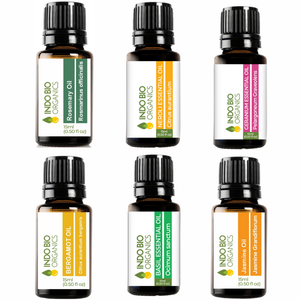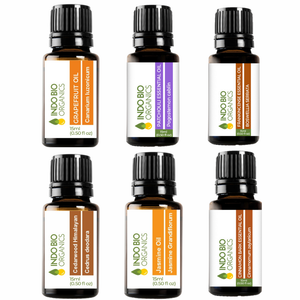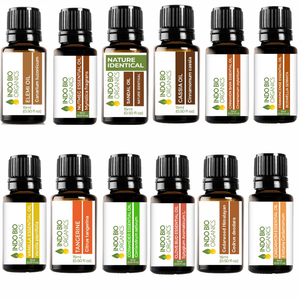Introduction: The Pink Salt Craze in Canada
Over the past decade, Himalayan Pink Salt has evolved from a gourmet kitchen trend into a full-fledged wellness movement in Canada. Whether it’s sprinkled over roasted vegetables, dissolved in a warm bath, or glowing gently inside a salt lamp — Canadians have wholeheartedly embraced this rosy mineral.
Walk into any natural food store from Toronto to Vancouver, and you’ll find entire shelves dedicated to pink salt, marketed as “detoxifying,” “rich in 84 minerals,” and “a healthier alternative to table salt.” But amid this buzz, how much of what we hear is backed by science — and how much is clever marketing?
This blog dives into the top 5 myths surrounding Himalayan Pink Salt and contrasts them with scientifically supported facts, helping Canadians make informed wellness decisions.
Understanding Himalayan Pink Salt: What It Really Is
Before separating myth from fact, it’s important to understand what Himalayan Pink Salt truly is.
This salt is mined primarily from the Khewra Salt Mine in Pakistan, located near the foothills of the Himalayas. Its distinctive pink hue comes from trace minerals such as iron oxide, magnesium, calcium, and potassium. These minerals account for less than 2% of its total composition — the remaining 98% is sodium chloride, just like regular table salt.
While the color and natural origin give Himalayan Pink Salt its appeal, the key question is whether these differences translate into meaningful health benefits.
Let’s uncover the truth.
Myth #1: “Himalayan Pink Salt Is a Superior Source of Minerals”
The Claim
Many brands advertise Himalayan Pink Salt as “rich in 84 trace minerals” that are essential for the human body — suggesting that consuming it provides a wide range of nutrients absent in refined table salt.
The Truth
While Himalayan Pink Salt indeed contains trace minerals, their actual nutritional impact is negligible. Multiple chemical analyses show that these minerals — including zinc, iron, and magnesium — occur in microscopic amounts.
According to a 2011 study published in the Journal of Food Composition and Analysis, one gram of Himalayan salt provides mineral quantities so tiny they fail to meet even 1% of the daily recommended intake.
Example
To get the same amount of calcium found in a single glass of milk, you’d need to eat more than 3 kilograms of pink salt — an impossible and unsafe amount.
Fact
Himalayan Pink Salt’s mineral diversity contributes to its aesthetic and taste, but not to its nutritional value. It should be seen as a natural, unrefined salt — not a vitamin supplement.
Canadian Perspective
In Canada, where the average adult already consumes more than double the recommended sodium intake, it’s crucial to remember: switching from white to pink salt doesn’t lower sodium consumption — moderation still matters most.
Myth #2: “Pink Salt Detoxifies the Body”
The Claim
One of the most common marketing messages is that pink salt “flushes out toxins,” “balances the body’s pH,” or “cleanses the system.” This claim is often linked to pink salt baths or “sole water” (saltwater infusions claimed to have detoxifying properties).
The Truth
From a physiological standpoint, the human body already has highly efficient detox systems — primarily the liver, kidneys, and skin. There is no scientific evidence that consuming or soaking in Himalayan Pink Salt removes toxins from your body.
“Detoxification” as marketed by salt companies is a misleading concept — toxins are not flushed through pores, nor can salt baths replace the body’s natural processes.
What Actually Happens
When you soak in a pink salt bath, the benefits you feel — muscle relaxation, reduced swelling, improved circulation — come from osmosis and warm water therapy, not toxin removal. The minerals in the salt may help retain moisture on the skin, creating a soothing effect, but they do not extract harmful chemicals.
Fact
Himalayan Pink Salt baths are relaxing and beneficial for the skin, but they do not detoxify. They can support well-being indirectly by reducing stress, improving sleep, and promoting relaxation — which are valuable health effects, but not “detoxification.”
Canadian Context
Given Canada’s cold climate and dry winters, pink salt baths can help restore skin hydration and ease sore muscles. However, they should be viewed as part of a self-care routine, not a detox therapy.
Myth #3: “Himalayan Pink Salt Regulates Blood Pressure Better Than Regular Salt”
The Claim
Because Himalayan Pink Salt is unrefined and contains minerals like potassium and magnesium, some claim it helps balance electrolytes and regulate blood pressure more naturally than standard table salt.
The Truth
This claim mixes truth with misconception. While potassium and magnesium can help manage blood pressure, the amounts in pink salt are far too small to make any measurable difference. The main component — sodium chloride — still has the same biological effect as regular salt: in excess, it can raise blood pressure and increase cardiovascular risk.
A 2020 review by Health Canada reaffirmed that all salts, regardless of source or color, contribute similarly to sodium intake and should be limited.
Expert Insight
Dr. David Jenkins, a Canadian nutrition researcher at the University of Toronto, notes:
“The body doesn’t distinguish between pink, sea, or iodized salt when it comes to sodium metabolism. Excessive sodium, in any form, increases the risk of hypertension.”
Fact
Switching to pink salt does not lower blood pressure unless overall sodium consumption is reduced. Its advantage lies in being less processed — without anti-caking agents or chemical bleaching — which some consumers prefer for purity, not medical reasons.
Canadian Dietary Guidelines
The Canadian Sodium Intake Guidelines (2022) recommend adults consume less than 2,300 mg of sodium per day, equivalent to about 1 teaspoon of salt. Whether pink or white, moderation remains the key to cardiovascular health.
Bonus Insight: Why Canadians Love Himalayan Pink Salt Anyway
Even though many health claims are overstated, the Canadian affinity for Himalayan Pink Salt isn’t entirely misplaced. Its natural origin, aesthetic appeal, and less industrial processing align well with Canada’s growing preference for organic, sustainable, and eco-conscious products.
Pink salt fits into a broader movement of mindful consumption, where Canadians seek authenticity and transparency in their wellness choices.
Myth #4: “Himalayan Pink Salt Lamps Purify the Air”
The Claim
One of the most popular trends in Canadian homes is the pink salt lamp, touted as a natural air purifier. Advertisements claim these lamps:
-
Release negative ions
-
Neutralize pollutants
-
Reduce allergens and bacteria in the home
Many Canadians invest in these lamps expecting measurable respiratory or air quality benefits.
The Truth
While negative ions can improve air quality under specific industrial conditions, salt lamps generate extremely few negative ions, insufficient to produce any measurable purification. According to a 2018 study in the International Journal of Environmental Research, the ionization effect of salt lamps is negligible compared to natural sources like waterfalls or commercial ionizers.
Additionally, claims that salt lamps reduce airborne bacteria or allergens lack scientific support. Any perceived improvement is often due to placebo effect, ambiance, or psychological comfort rather than measurable air purification.
What Actually Happens
-
Warm glow: Creates a calming, cozy environment that can reduce stress and improve mood
-
Mindful placement: Simply having a lamp can encourage relaxation routines
-
Decorative appeal: Adds a natural aesthetic to homes, aligning with Canadian wellness trends
Fact
Salt lamps do not purify the air in a meaningful way. Their benefits are mostly psychological, aesthetic, and related to mindfulness.
Canadian Perspective
In colder Canadian months, where indoor air is dry and homes rely on heating systems, salt lamps can still enhance perceived air comfort and encourage a calming home environment — valuable wellness benefits, even if not scientifically measurable in air purification.
Myth #5: “Himalayan Pink Salt Improves Skin Naturally”
The Claim
Many health blogs claim that Himalayan Pink Salt can cure acne, remove toxins from skin, or reverse aging effects through baths, scrubs, or facial masks.
The Truth
Himalayan Pink Salt can have mild exfoliating and antibacterial effects, but it is not a cure-all. While soaking in salt water or using salt scrubs may temporarily remove dead skin cells, improve circulation, or soothe irritation, it does not reverse aging, cure acne permanently, or remove systemic toxins.
-
Exfoliation: Salt crystals help remove dead skin but can irritate sensitive skin
-
Minerals: Trace minerals may help retain skin moisture but are not clinically significant for skin repair
-
Anti-inflammatory effects: Warm salt baths can relieve minor skin irritation but do not treat dermatological conditions
Fact
Himalayan Pink Salt can support skin care routines when used carefully, but it is not a medical treatment. Canadians with skin concerns should rely on dermatologist-approved therapies alongside natural wellness routines.
Canadian Context
During long winters, dry indoor air in Canadian homes often leads to dry, itchy skin. Himalayan Pink Salt baths or scrubs can temporarily relieve discomfort, making it a helpful addition to self-care rather than a standalone remedy.
Practical Tips for Safe Usage
To enjoy the benefits of Himalayan Pink Salt without overstated expectations, Canadians should consider the following:
1. Moderation in Dietary Use
-
Limit total daily salt intake to 2,300 mg of sodium
-
Himalayan Pink Salt is still sodium chloride; excessive use carries the same cardiovascular risks as table salt
2. Safe Bath Practices
-
Use 1–2 cups of pink salt in a warm bath
-
Avoid soaking for more than 30 minutes to prevent dehydration
-
Rinse with clean water afterward to remove excess salt
3. Skin Exfoliation
-
Use coarse salt scrubs no more than 2–3 times per week
-
Avoid open wounds or sensitive skin areas
-
Mix with natural oils (jojoba, coconut, or almond) to reduce irritation
4. Pink Salt Lamps
-
Ensure lamps are properly sealed and maintained to prevent water damage or electrical hazards
-
Place lamps in areas where calming ambiance is desired, rather than expecting air purification
5. Purchasing Authentic Salt
-
Source from reputable Canadian suppliers
-
Look for minimally processed, Khewra-origin Himalayan Pink Salt
-
Avoid salts with artificial coloring or additives
Integrating Himalayan Pink Salt into Canadian Wellness Routines
Despite debunked myths, Himalayan Pink Salt has real value when used thoughtfully and with realistic expectations. Canadians have embraced it across multiple dimensions of lifestyle and wellness:
Culinary Uses
-
Finishing salts for salads, vegetables, and plant-based dishes
-
Cooking on salt blocks for subtle mineral infusion and gourmet presentation
Self-Care & Relaxation
-
Salt baths for muscle relaxation and stress relief
-
Scrubs and facials for mild exfoliation and skin hydration
-
Mindful routines integrating lamps and salt décor
Mindfulness & Ambiance
-
Warm glow of salt lamps enhances meditation, yoga, or reading corners
-
Encourages intentional living and self-care routines
Eco-Conscious Living
-
Chemical-free cleaning (with salt and lemon/vinegar)
-
Minimal packaging and natural sourcing align with Canadian sustainability trends
Canadian Market Insights
The Canadian market shows strong adoption of Himalayan Pink Salt in both wellness and lifestyle segments:
-
Health and organic food stores in major cities like Toronto, Vancouver, Montreal, and Calgary carry a wide variety of pink salt products
-
Online sales are rising on platforms like Amazon.ca, Well.ca, and specialty wellness sites
-
Consumers show willingness to pay a premium for authenticity, traceability, and minimally processed products
This demonstrates that Canadians value natural, multi-functional products, even if not all health claims are scientifically proven.
Key Takeaways
-
Myth #1: Pink salt minerals are not nutritionally significant.
-
Myth #2: Salt baths relax but do not detoxify.
-
Myth #3: Pink salt does not lower blood pressure.
-
Myth #4: Salt lamps provide ambiance, not air purification.
-
Myth #5: Salt scrubs support skin care, but are not medical treatments.
Despite myths, Himalayan Pink Salt is a versatile wellness tool: culinary, self-care, ambiance, and eco-conscious uses make it valuable for Canadian households.
Conclusion: Himalayan Pink Salt in Canadian Homes
Himalayan Pink Salt has found a unique niche in Canada, blending wellness, beauty, culinary, and mindful lifestyle applications. By separating myth from fact, Canadians can leverage its real benefits without unrealistic expectations.
It encourages mindful living, relaxation, and natural self-care, while reminding consumers that science-based moderation remains essential. Used thoughtfully, it enhances wellness routines, home ambiance, and personal care — making Himalayan Pink Salt a truly multi-functional wellness companion for Canadian lifestyles.
If You Want ot Buy Himalayan Pink Salt in India Explore it Indobio Organics





